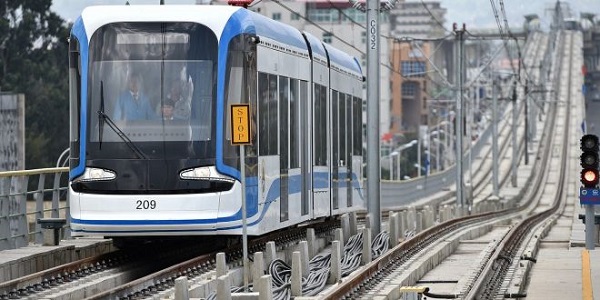
The AALRT is at the forefront of championing low carbon transport for the area and is powered by low-carbon electricity from hydropower, geothermal and wind, and from the Ethiopian grid.
Challenges
A breakdown of the city’s total emissions by sector indicates that transportation, along with buildings and waste, is one of the main contributors to greenhouse gas (GHG) emissions in Addis Ababa- transportation contributes to around 47% of Addis’ total emissions. Improvements to public transport, therefore, have the potential to significantly contribute to the city’s plans for reducing GHG emissions, as well as providing socio-economic, environmental and sustainability co-benefits.
Actions
The Addis Ababa Light Rail Transit (AALRT) is currently operating at full capacity, serving up to 60,000 passengers across four lines, every hour. Full emissions reduction data are not yet available for the project but the cumulative emission reduction potential of the AALRT system is forecasted at 1.8 million tCO2e by 2030.
The Government will recoup its investment in the project through large tax collection from passenger travel service provision. There is also potential for additional revenue generation through technology transfer agreements. Construction of the AALRT created over 5,000 jobs, and the current operation employs over 1,100 people. Easy access to the system means that passengers can reliably reach their place of work on time- the city average transport speed is improved from 10km/hr (by road traffic) to 22km/hr (by AALRT). It also greatly improves transport options for those less able, such as the elderly and disabled. Furthermore, the system improves access to vital services such as health care facilities.
The AALRT is at the forefront of championing low carbon transport for the area and is powered by low-carbon electricity from hydropower, geothermal and wind, and from the Ethiopian grid. It uses less land than road construction, and has lower noise and air pollution levels. In addition to this, the risk of damage to AALRT infrastructure from landslides and floods has been minimized through adaptation measures such as above-grade long bridges and spatial drainage systems.
Projected Outcomes
The cumulative emission reduction potential of the AALRT system is forecasted at 1.8 million tCO2e by 2030. The project will continue to yield significant social, economic and environmental co-benefits through its provision of low-carbon, reliable and equitably accessible transport.
There are plans to scale the project from 34 km to 185 km in the next ten years. Addis Ababa are also engaging with other cities in Ethiopia to help them build similar AALRT projects. As such, the project will have positive, wider impacts beyond the borders of just the city.
Source: C40 Cities
